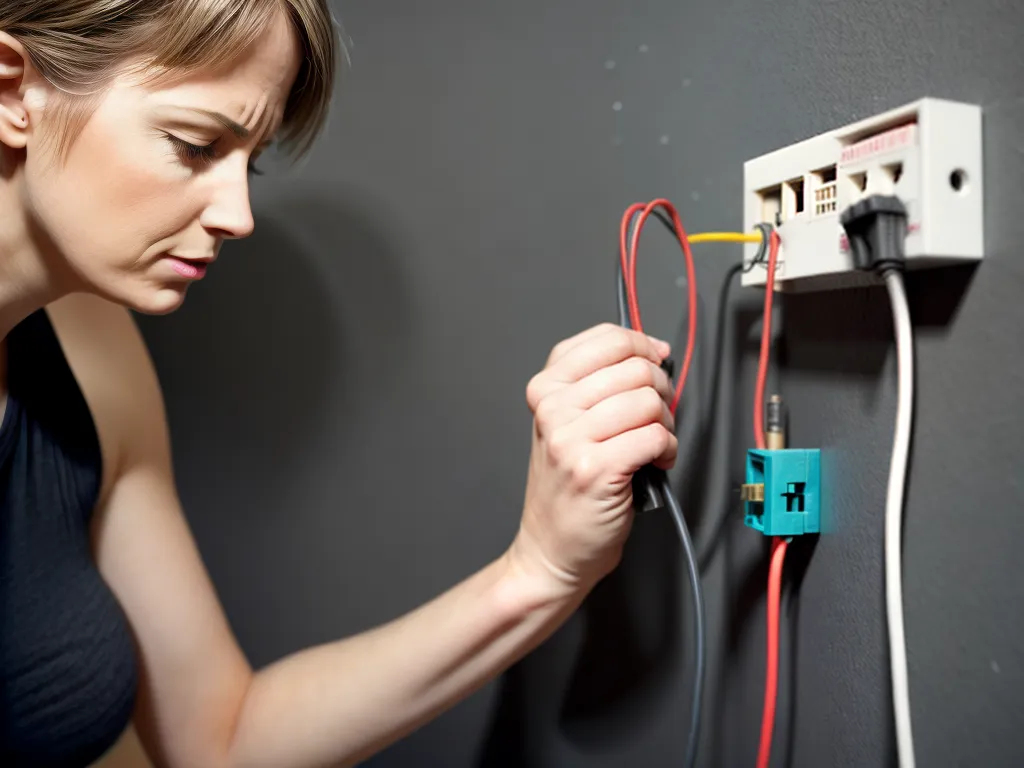
Wiring a home can seem intimidating, but it doesn't have to be. With proper planning and safety precautions, you can successfully wire most of your home in just 10 steps. I will walk you through each step so you fully understand the wiring process from start to finish.
Step 1: Create a Wiring Plan
Before you start wiring, you need a plan. This involves:
-
Making a list of all the things you want to wire like lights, outlets, appliances etc.
-
Drawing out a floor plan and mapping where all the wires will go. Be as detailed as possible.
-
Researching the required materials and buying everything you need upfront like wire, boxes, conduit, connectors etc.
Having a detailed wiring plan is crucial. It helps ensure you don't miss anything and prevents costly mistakes down the road. Take your time with this step.
Step 2: Turn Off Power at the Breaker
Before handling any wires, you must turn off power to the circuits you are working on at the main breaker panel. Accidentally touching live wires can result in severe shock or death.
To be safe:
-
Locate your main breaker panel and open the door.
-
Identify which breaker controls the circuit you want to wire.
-
Double check it's the correct one by turning on a device on that circuit and flipping the breaker off.
-
With the breaker off, use a non-contact voltage tester to confirm power is off.
Working on live wires is extremely dangerous, so take precautions. With the power off, you can safely handle wiring.
Step 3: Install Electrical Boxes
Now you can start wiring. First, install all the electrical boxes that will hold devices, lights and outlets.
-
Mark the exact locations on your floor plan. Make sure boxes meet code for minimum size.
-
Cut holes in the drywall and insert boxes, securing with clamps or screws.
-
Make sure boxes are flush with the wall surface.
Install boxes accurately the first time. It's hard to relocate them once wiring is complete. Take your time to get outlet and switch placement exactly where you want it.
Step 4: Run Cables Between Boxes
Next, run the electrical cables between each box location. You have a few options:
-
Non-metallic sheathed cable (NM) - Very common. Runs inside walls.
-
Conduit - Metal or PVC piping. Installed on surface or inside walls.
-
Armored cable - Flexible metal cable. Used for repairs or exposed runs.
I recommend starting with NM cable. It's the easiest for DIY installations. Use the correct gauge for your circuits and safety cables where required.
Step 5: Pull Cables Through Boxes
Once cables are run between boxes, you need to pull them into position.
-
Leave excess length in each box - at least 6 extra inches.
-
Neatly coil the extra cable in the back of the box.
-
Carefully pull cables tight so they enter the box straight on.
Having slack in the boxes allows you to make adjustments and wiring connections easily. It also enables you to reuse boxes if you remodel later.
Step 6: Clamp Cables at Boxes
Cables must be properly clamped and secured inside each box for safety:
-
Use a cable clamp to hold the cable jacket firmly.
-
Tighten the clamp with a screwdriver until snug.
-
Make sure insulation enters the box, not just bare wires.
-
Clip off any excess cable with wire cutters.
Properly anchored cables prevent strain on connections which could loosen wires. Take time to secure every cable properly.
Step 7: Label All Your Wires
Stay organized by labeling each wire with masking tape:
-
Identify the room and purpose like “Living Room Lights".
-
Use consistent lettering to match your wiring plan.
-
Label at both ends of each cable.
Correct labeling prevents mixups as wiring gets more complex. It also makes testing connections easier and faster.
Step 8: Make Secure Wire Connections
Connecting multiple wires properly is key for safe, long lasting circuits.
-
Always turn off power at the breaker before making connections.
-
Use twist-on connectors or wire nuts to join wires.
-
Twist nuts on securely until tight. Then tug firmly to ensure a proper seal.
-
No bare wire should be exposed.
Making solid electrical connections takes practice. Ensure every joint is done correctly before moving to the next.
Step 9: Mount Switches and Outlets
Almost there! Next, securely mount all:
-
Light switches in switch boxes
-
Outlets in outlet boxes
-
Any other wired devices like thermostats
-
Use provided mounting screws to affix each device.
When mounting, keep wires neatly tucked inside boxes. Take care not to damage insulation or connections.
Step 10: Turn Power Back On and Test
You made it! The last step is:
-
Turn power back on at the breaker and test:
-
Fixtures and outlets using a multimeter to confirm power
-
Lights and devices to ensure they function properly
-
-
Check for any problems like shorts. Troubleshoot as needed.
-
Add wall plates to all boxes to complete the job.
-
Bask in the satisfaction of wiring your home yourself.
Take it slow and double check connections on the first try. If all goes well, you can enjoy your newly wired home for years to come.
Wiring a home seems intimidating, but as you can see, it's actually a very manageable, straightforward process. By following these 10 key steps, you can completely wire a home without problems. Just take precautions, make a plan, and work carefully. Remember to get permits and call an electrician if you feel unsure about any part of the process. With some diligence and safety awareness, you can wire like a pro!